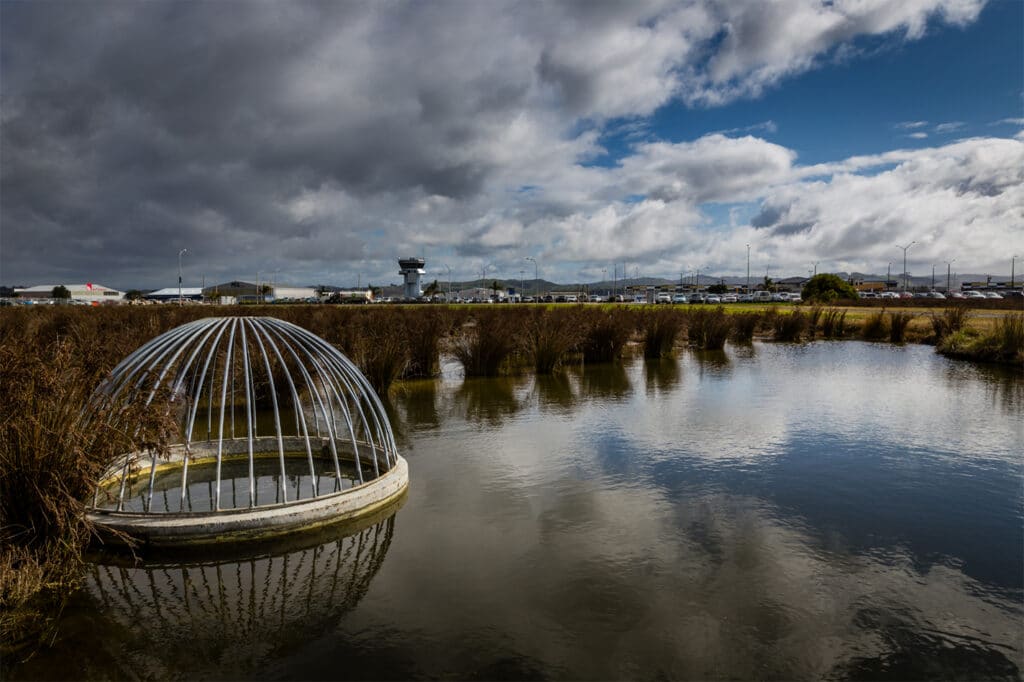Hawke’s Bay Airport has added a bold new target to its environmental ambitions, announcing plans to be carbon neutral by 2030.
CEO Stuart Ainslie says the organisation is keen to do what it can to reduce the impacts of climate change and is confident they can reach their goal.
“We want to be New Zealand’s most sustainable airport and to that end, putting a line in the sand on our carbon emissions is a powerful tool.”
The new goal will see the airport working hard to reduce and offset scope 1 and 2 emissions – those from sources the company owns or controls, like vehicles and generators, and those generated by direct purchases, such as electricity.
Emissions have been below 50 tonnes a year for the past three years, a figure that’s relatively low compared to other infrastructure organisations.
“We’ve already been able to reduce our average emissions per passenger by 12%, using the 2016-2019 period as a baseline, but we know there’s more we can do. We have a decarbonisation plan in place and have identified nearly 40 initiatives that will make a concrete difference to our emissions.”
‘’A number of these initiatives are already underway – we’ve introduced electric and hybrid vehicles into our operational fleet, we’re opening a bicycle hub onsite, and we’ve switched to 100% renewable carboNZero-certified energy from Ecotricity.”
Also on the cards are upgrading carpark lighting to LED or solar lighting, installing EV charging stations, and incorporating a range of energy efficient fittings into the new terminal building.
“We’re working hard to integrate sustainable solutions right across our operations, but we’re also looking at some big, out-of-the box solutions to our challenges – our investigation into the feasibility of a solar farm is a great example of that.”
Mr Ainslie says Hawke’s Bay Airport is also open to looking at innovative new technologies that could help airlines reduce their emissions.
“Maybe there’s an opportunity to do something cutting edge like emission-free ground services or supplying electric power solutions. We don’t yet know what form that will take, but we’re open to all discussions.”
HBAL recently became the first regional airport in New Zealand to gain a Level 2 certification under the Airport Carbon Accreditation programme, the international gold standard for airport sustainability.
Mr Ainslie says the certification recognises the organisation’s commitment to emissions reduction, climate change mitigation, and sustainable development.
“It shows we’ve made some strong progress already. There’s a lot more to be done before we can reach that net zero target, but we have a unique opportunity to set the tone now for any future developments and to entrench sustainability in everything we do.”
Further information:
- The average annual emissions per capita in New Zealand is about 18 tonnes CO2e.
- Hawke’s Bay Airport is one of five New Zealand airports to make public carbon reduction commitments, alongside Auckland, Christchurch, Wellington and Gisborne. Already 194 airports in Europe have committed to net zero by 2050 [1]
- Joining the Airport Carbon Accreditation Programme is a key platform for HBAL achieving net zero (1 and 2) carbon emissions by 2030. The programme is based on international standards ISO14064-1:2018 Specification with guidance at the organisation-level for quantification and reporting of greenhouse gas emissions and removals and the GHG Protocol Corporate Accounting Standard.
- Greenhouse gas (GHG) emission sources are classified into three “scopes”.
- In 2018, the Intergovernmental Panel on Climate Change (IPCC) confirmed that the world needs to halve CO2 emissions by around 2030 and reach net-zero CO2 emissions by the middle of the century in order to limit global warming to 1.5°C.
- Through the Climate Change Amendment Act (Zero Carbon Bill) passed in November 2019, New Zealand has committed to a net zero carbon target by 2050 and a reduction of between 24 and 47 percent of methane emissions by 2050.
- Scope 1 are direct GHG emissions that come from sources owned or controlled by HBAL – these include HBAL-owned vehicles and generators.
- Scope 2 are energy indirect GHG emissions that come from sources purchased by HBAL such as electricity.
- Scope 3 are other indirect GHG emissions which occur because of HBAL’s business activities but come from sources not directly controlled by HBAL, such as fuel used in aircraft during take-off and landing, passenger ground access, contractor vehicles, waste to landfill, staff travel and water consumption
- In 2018, the Intergovernmental Panel on Climate Change (IPCC) confirmed that the world needs to halve CO2 emissions by around 2030 and reach net-zero CO2 emissions by the middle of the century in order to limit global warming to 1.5°C.
- Through the Climate Change Amendment Act (Zero Carbon Bill) passed in November 2019, New Zealand has committed to a net zero carbon target by 2050 and a reduction of between 24 and 47 percent of methane emissions by 2050.
[1] Airports Council International Europe | ACI EUROPE – Media (aci-europe.org)
